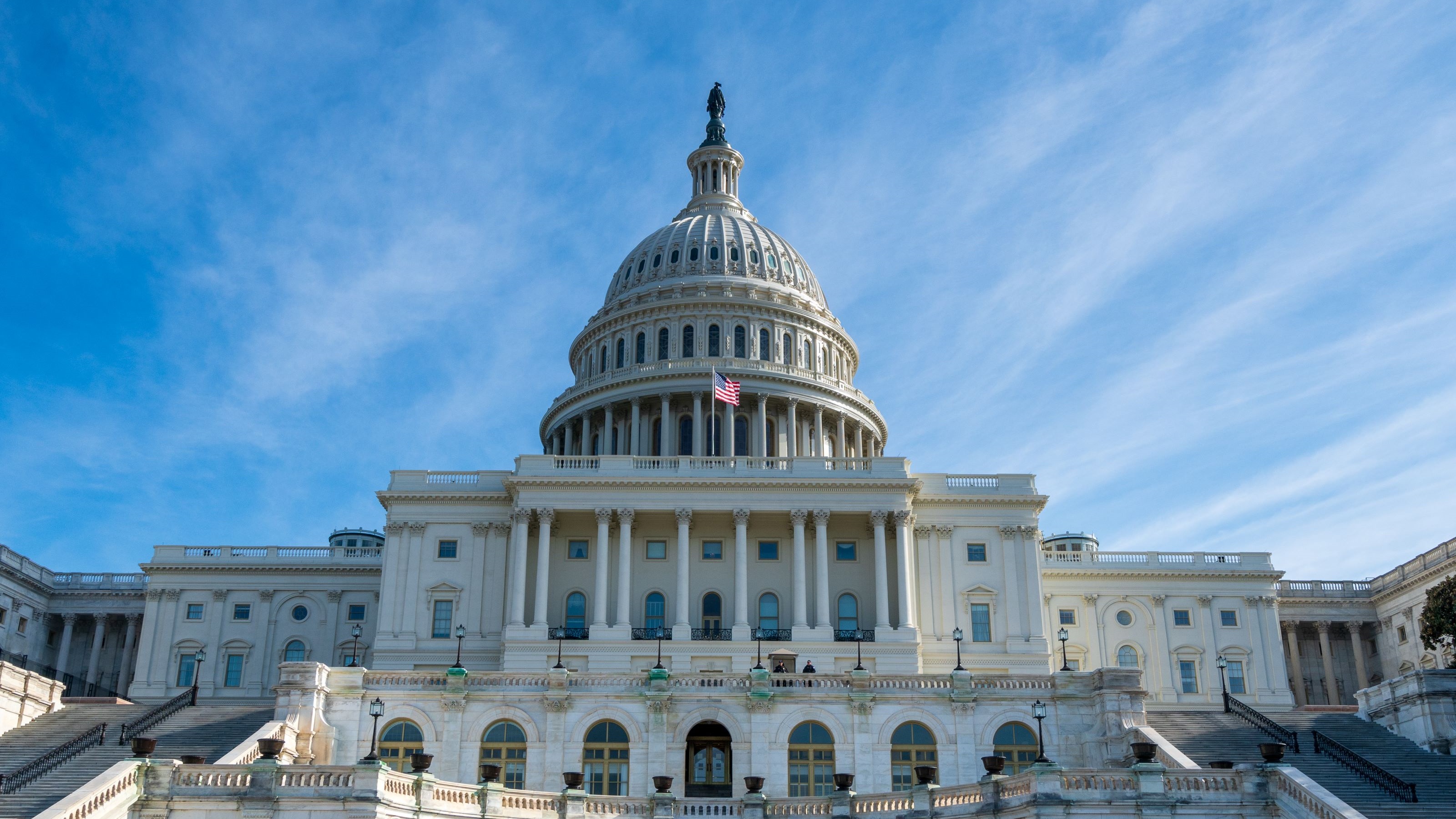What States Have Expanded Child Tax Credits This Year?
Some families could see expanded state child tax credits when they file taxes for 2024. Here’s what you should know.


The federal expanded child tax credit (CTC) popular during the COVID-19 pandemic expired and hasn’t returned. But the expanded benefit, which in many cases included advance monthly tax credit payments of up to $300 per qualifying child, benefited families in the United States. Government data show that 2.9 million children were lifted out of poverty due to the expanded federal CTC.
Earlier this year, the U.S. House of Representatives passed a bipartisan tax deal, which included a new child tax credit that would have partially restored the expansion. Unfortunately, the tax bill has stalled in the Senate. So, it's unclear whether a federal expanded CTC will become law before the end of this year.
However, there is some good news: at least nine states have implemented their own expanded child tax credits. Here’s what you need to know about those.
From just $107.88 $24.99 for Kiplinger Personal Finance
Become a smarter, better informed investor. Subscribe from just $107.88 $24.99, plus get up to 4 Special Issues

Sign up for Kiplinger’s Free Newsletters
Profit and prosper with the best of expert advice on investing, taxes, retirement, personal finance and more - straight to your e-mail.
Profit and prosper with the best of expert advice - straight to your e-mail.
State expanded child tax credits
Minnesota enacted a child tax credit last year worth up to $1,750 per qualifying child. That amount is higher than the child tax credits offered in other states.
Minnesota legislation leaves open the possibility for advance payments in future years. That means eligible families in Minnesota could receive part of the state child tax credit before filing their Minnesota state tax returns.
Previously, in New York, children under age four didn’t qualify for the state’s child tax credit. However, an expanded New York child tax credit changed that to include all children up to age 17. The law became effective last year.
The state's child tax credit is worth up to $100 per eligible child or 33% of the federal CTC (currently up to $2,000 per child) and the federal additional CTC claimed, whichever is greater.
Colorado increased its state child tax credit to a maximum of $1,200 per child. Colorado’s expanded CTC goes into effect for the 2024 tax year, so eligible families will receive the larger credit in 2025 when they file their 2024 Colorado state tax returns.
The California Young Child Tax Credit allows eligible families with as little as $1 and as much as $30,000 in earned income to claim the credit, which is worth up to $1,083 per tax return. These numbers may be adjusted for the 2024 tax year.
An Oregon child tax credit enacted last year, known as the Oregon Kid's Credit, allows eligible families to claim up to $1,000 per child. A provision in the bill allows the possibility for advance payments in the future.
Utah approved a non-refundable child tax credit worth $1,000 per child under the age of four. The measure takes effect this year (for tax returns filed in early 2025).
Maryland, Massachusetts, Vermont, New Mexico, and New Jersey have made their child tax credits refundable, meaning eligible families may receive the credit amount back as a tax refund when they file their year-end state tax returns.
With expanded state child tax credits gaining popularity, it is possible that more states will pass legislation to offer expanded state child tax credits of some kind.
Why child tax credits matter: Impact of the expanded federal CTC
The U.S. Census Bureau studied the pandemic-era federally expanded child tax credit and found that “the Child Tax Credit lifted 2.9 million children out of poverty.”
- The federal expanded child tax credit allowed families to claim fully refundable credits for dependent children up to age 17.
- Making the credit fully refundable allowed eligible households to receive the amount of the credit back as a tax refund.
- The pandemic-era expanded child tax credit increased the credit from $2,000 per eligible child to $3,000 for children ages 6 to 17 ($3,600 for children under 6).
- And, rather than waiting to get the credit when filing federal tax returns, many families received part of the expanded child credit through advance monthly payments.
However, the positive impact of the temporary federal child tax credit didn’t last, because the credit expired. Various studies found that the expiration of the federal expanded child tax credit negatively impacted families with lower incomes.
For example, one such study revealed that the expired extended credit resulted in a 25% increase in food insufficiency among families with children. According to the study, the alarming increase in food insecurity was reached by July 2022, not even one full year after the expanded federal child credit expired.
While newly expanded state child tax credits aren’t expected to provide the drastic positive results that the pandemic-era federal credit produced, many families could still benefit.
- For example, the Minnesota state child tax credit is expected to reduce child poverty in the state by 33%, according to information provided on Gov. Tim Walz’s website.
- New York’s expanded child tax credit will reportedly benefit 900,000 more children by including children up to age 3.
- The New Mexico expanded child tax credit is expected to benefit an estimated 214,000 families, according to a press release issued by the New Mexico governor’s office.
Related Content
Profit and prosper with the best of Kiplinger's advice on investing, taxes, retirement, personal finance and much more. Delivered daily. Enter your email in the box and click Sign Me Up.

Katelyn has more than 6 years of experience working in tax and finance. While she specialized in tax content while working at Kiplinger from 2023 to 2024, Katelyn has also written for digital publications on topics including insurance, retirement, and financial planning and had financial advice commissioned by national print publications. She believes knowledge is the key to success and enjoys providing content that educates and informs.
-
 Gold and Silver Shine as Stocks Chop: Stock Market Today
Gold and Silver Shine as Stocks Chop: Stock Market TodayStocks struggled in Friday's low-volume session, but the losses weren't enough to put the Santa Claus Rally at risk.
-
 Don't Wait Until January: Your Year-End Health Checklist to Kickstart 2026
Don't Wait Until January: Your Year-End Health Checklist to Kickstart 2026Skip the fleeting resolutions and start the new year with a proactive plan to optimize your longevity, cognitive health, and social vitality.
-
 Premium Rewards Cards: More Perks, Higher Fees
Premium Rewards Cards: More Perks, Higher FeesSome issuers are hiking the annual fee on their flagship luxury credit cards by hundreds of dollars. Are they still worth using?
-
 Retirees in These 7 States Could Pay Less Property Taxes Next Year
Retirees in These 7 States Could Pay Less Property Taxes Next YearState Taxes Retirement property tax bills could be up to 65% cheaper for some older adults in 2026. Do you qualify?
-
 Estate Tax Quiz: Can You Pass the Test on the 40% Federal Rate?
Estate Tax Quiz: Can You Pass the Test on the 40% Federal Rate?Quiz How well do you know the new 2026 IRS rules for wealth transfer and the specific tax brackets that affect your heirs? Let's find out!
-
 5 Types of Gifts the IRS Won’t Tax: Even If They’re Big
5 Types of Gifts the IRS Won’t Tax: Even If They’re BigGift Tax Several categories of gifts don’t count toward annual gift tax limits. Here's what you need to know.
-
 The 'Scrooge' Strategy: How to Turn Your Old Junk Into a Tax Deduction
The 'Scrooge' Strategy: How to Turn Your Old Junk Into a Tax DeductionTax Deductions We break down the IRS rules for non-cash charitable contributions. Plus, here's a handy checklist before you donate to charity this year.
-
 Tax Refund Alert: House GOP Predicts 'Average' $1,000 Payouts in 2026
Tax Refund Alert: House GOP Predicts 'Average' $1,000 Payouts in 2026Tax Refunds Here's how the IRS tax refund outlook for 2026 is changing and what steps you can take now to prepare.
-
 New IRS Changes to FSA Contribution Limits for 2026: What to Know
New IRS Changes to FSA Contribution Limits for 2026: What to KnowHealth Care Flexible Spending Accounts have tax advantages worth looking into, especially in light of new IRS changes.
-
 Is a New $25,000 Health Care Tax Deduction Coming in 2026?
Is a New $25,000 Health Care Tax Deduction Coming in 2026?Tax Policy A proposal from GOP Sen. Josh Hawley adds to the chatter about health care affordability.
-
 3 Ways High-Income Earners Can Maximize Their Charitable Donations in 2025
3 Ways High-Income Earners Can Maximize Their Charitable Donations in 2025Tax Deductions New charitable giving tax rules will soon lower your deduction for donations to charity — here’s what you should do now.